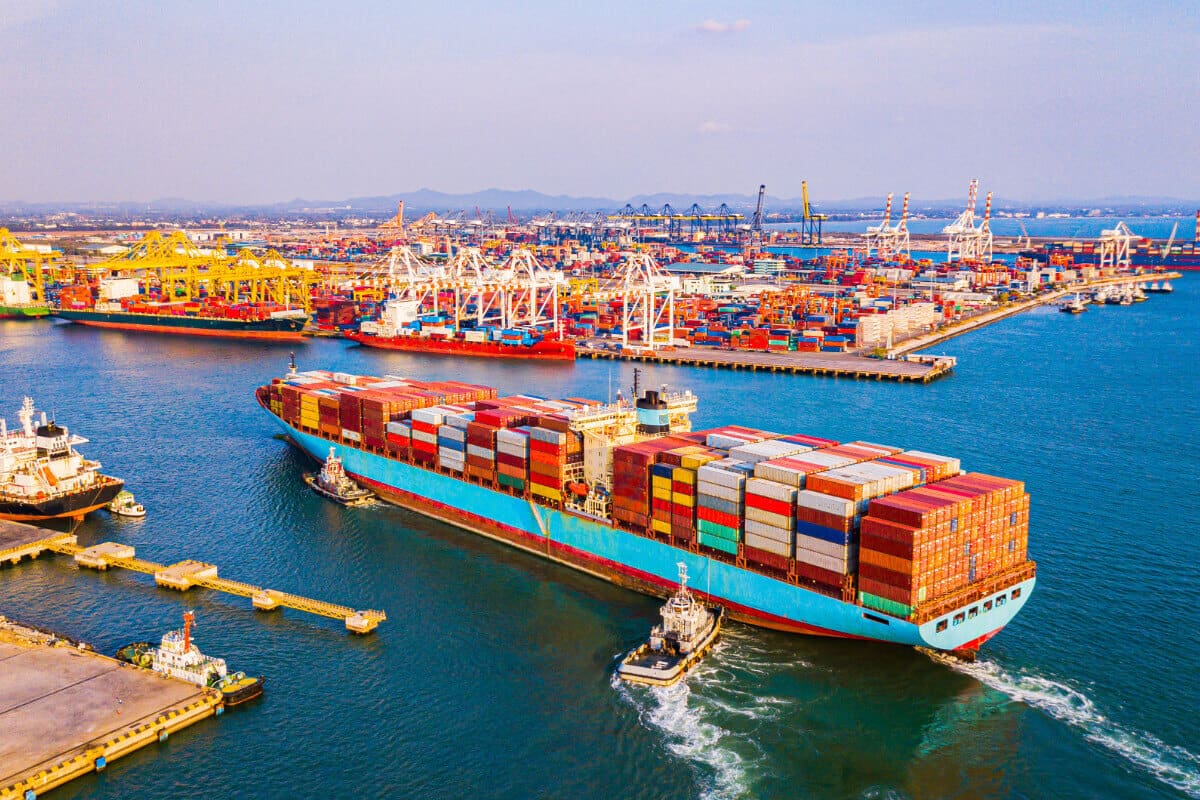When we look at the world of import and export, it’s clear that this exchange shapes how countries develop and interact globally. The reasons for and the impact of these exchanges are deep and varied, touching almost every aspect of daily life and national growth.
This discussion aims to unravel the complexities of international trade, offering insights into its fundamental drivers and overarching effects on economies worldwide.
Table of Contents
- Fundamentals of Import and Export
- Impact of Import and Export on National Economies
- Challenges and Opportunities in Import and Export
- The Role of Technology in Shaping Global Trade
- Related Content
Fundamentals of Import and Export
In our interconnected world, the dance of import and export forms the rhythm of global economics. Big and small nations are part of this intricate ballet, driven by the desire to thrive in a complex, dynamic environment. But what propels countries to embark on importing and exporting goods? To understand this, we must delve into the motivations at the heart of international trade.
At its core, trade fulfills a nation’s needs and wants, and it cannot meet these needs with its resources alone. Consider, for example, the simple case of climate and geography. Like Canada, a country with a cold climate cannot grow tropical fruits such as bananas and mangos.
Thus, it turns to import from countries like Ecuador or the Philippines, where the warm, tropical climate allows these fruits to flourish. This exchange benefits both nations, providing Canadians with nutritious fruit varieties and supporting agricultural economies in the exporting countries.
Moreover, the concept of specialization plays a pivotal role. Nations often focus on industries with a competitive advantage due to factors like technology, skilled labor, or natural resources.
Japan, known for its advanced technology and precision manufacturing, exports electronics and automobiles worldwide. This specialization allows countries to produce goods more efficiently and at a lower cost, enhancing their global competitiveness and fostering economic growth.
Another driving force is the quest for economic diversification. Relying heavily on a single industry or resource can leave a nation vulnerable to market volatility and economic downturns.
Countries can diversify their economies by engaging in international trade, reducing risk, and creating more stable economic conditions. The United Arab Emirates, for instance, has been diversifying its economy beyond oil through investments in tourism, aviation, and real estate, using its strategic location and wealth to import goods and services that support these sectors.
Furthermore, trade agreements and partnerships stimulate import and export activities. These bilateral or multilateral agreements aim to reduce trade barriers such as tariffs and quotas, making it easier and more profitable for countries to exchange goods and services. The North American Free Trade Agreement (NAFTA), now replaced by the United States-Mexico-Canada Agreement (USMCA), is a prime example of how trade pacts can encourage economic integration and boost trade volumes among member countries.
Lastly, pursuing innovation and quality drives nations to look beyond their borders. Importing goods can introduce new technologies and high-quality products to the domestic market, inspiring local industries to innovate and improve their offerings. On the other hand, exporting pushes businesses to maintain high standards to compete globally, fostering a culture of excellence and innovation within the country.
In conclusion, the motivations behind a nation’s engagement in import and export are multifaceted. From the necessity of acquiring domestically unavailable goods to the strategic advantages gained through specialization and economic diversification, international trade is vital to a country’s economic strategy.
Through trade agreements and the pursuit of innovation, countries enhance their prosperity and contribute to a more interconnected and prosperous global community.
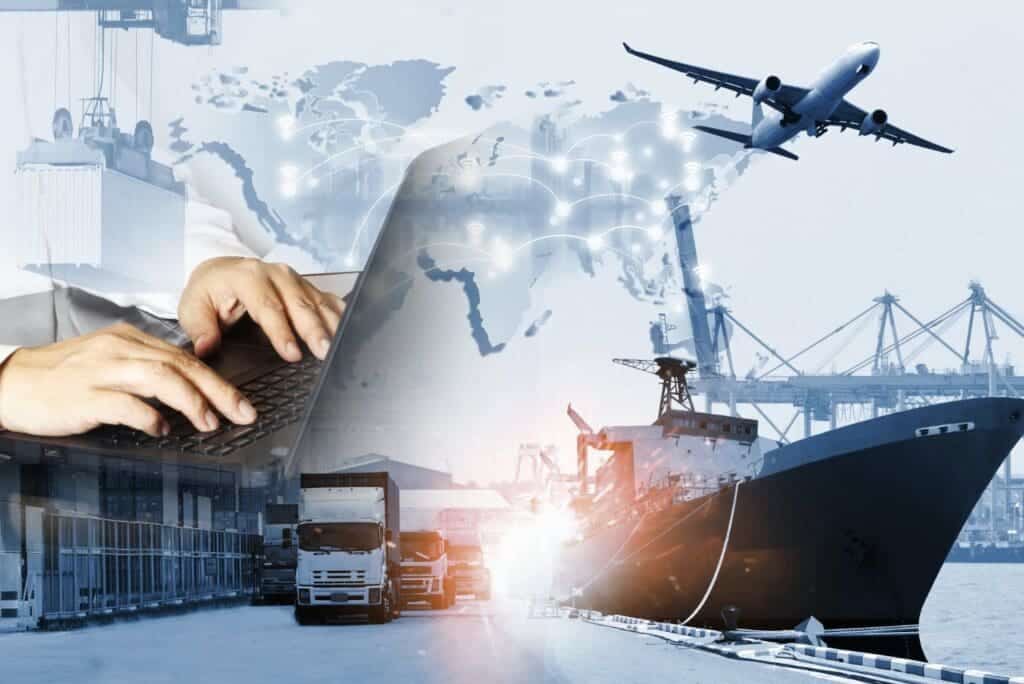
Impact of Import and Export on National Economies
In the intricate dance of global commerce, the choreography of import and export activities plays a pivotal role in shaping nations’ economic terrain. At its core, this economic tango fosters the exchange of goods and the interweaving of cultures, technologies, and ideas, ultimately driving the wheel of economic progress and innovation.
Delving deeper, the mechanism of import and export acts as the bloodstream of a nation’s economy, carrying the life-giving nutrients of foreign investment and currency exchange. It’s a testament that no country can live in isolation, irrespective of its resources or technological prowess. This interconnectedness fuels economic resilience, allowing nations to weather the storms of unpredictable market conditions and geopolitical tensions.
The export sector is mainly a beacon of national pride and economic strength. It’s where a country showcases its areas of excellence on the global stage—for example, Germany’s prowess in automotive engineering or the acclaim of French wines.
These are not just products; they represent a culmination of tradition, expertise, and innovation that command a premium in the global market. Exports bring in substantial revenue and bolster national branding, creating a ripple effect that benefits multiple facets of the economy, from job creation to technological advancement.
Conversely, imports fill the gaps in domestic markets, ensuring that nations can access essential goods, superior technologies, or raw materials that are either scarce or absent locally. This exchange catalyzes competition, driving domestic industries to elevate their standards, enhance quality, and innovate, fostering a healthy, dynamic economic environment that benefits consumers and businesses alike.
Furthermore, the ebb and flow of imports and exports are significant indicators of a nation’s economic health and position in the global pecking order. A surplus in exports, for instance, can signify a strong, vibrant economy. At the same time, a heavy reliance on imports might point to vulnerabilities and dependencies that could become Achilles’ heels if not managed with strategic foresight.
In the evolving global trade narrative, nations increasingly recognize the importance of fostering balanced trade relationships. It’s not just about exporting more or importing luxury; it’s about crafting a harmonious blend that supports sustainable growth, innovation, and economic stability.
This reality is pushing countries to negotiate trade agreements that are not just beneficial but equitable, aiming to create a level playing field that nurtures mutual growth and understanding among nations.
In conclusion, the ballet of imports and exports is far more than merely exchanging goods. It’s a complex, dynamic system that sculpts the economic landscapes of nations, encouraging them to innovate, collaborate, and compete.
In this global marketplace, the future belongs to those who can navigate the intricate dance of international trade with agility, foresight, and a spirit of cooperation, ensuring prosperity for themselves and the global community.
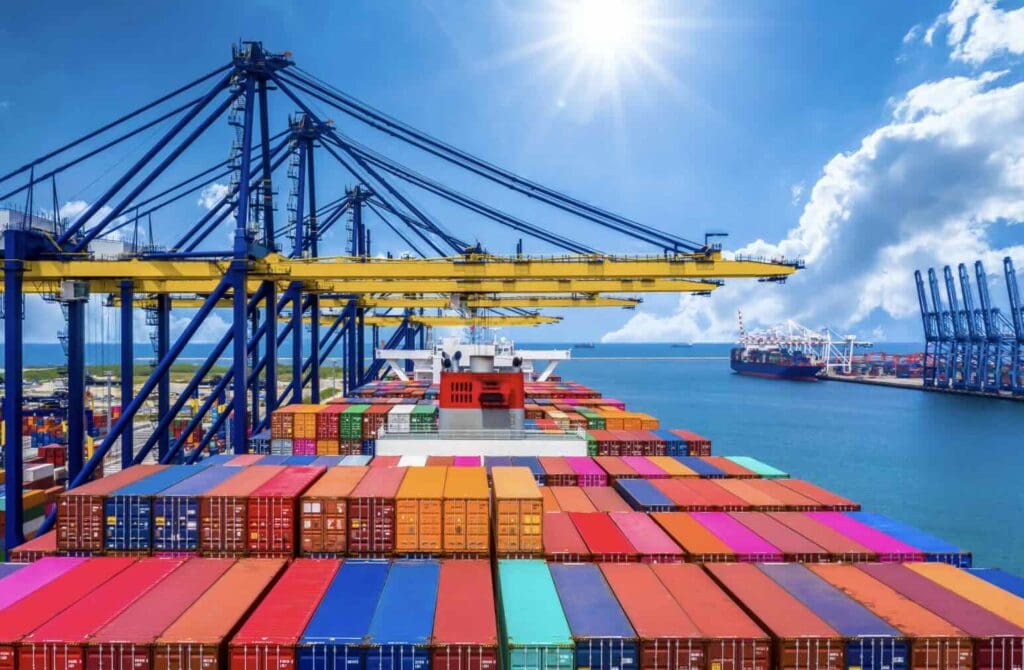
Challenges and Opportunities in Import and Export
In today’s global trade landscape, navigating the waters of international commerce requires a savvy understanding of prevailing challenges and emerging opportunities. As nations continue to expand and refine their global trade practices, several key factors emerge as pivotal in this dynamic environment.
One significant challenge is the adaptation to rapidly evolving technology. In an age where digital advancements occur at breakneck speed, staying competitive demands embracing innovation.
This technological leap forward requires investment in new technologies and education and training for the workforce to navigate these changes skillfully. Countries that lead in technological adoption and integration stand to gain a competitive edge in the global market, showcasing their ability to streamline operations and enhance productivity.
Moreover, the rise of e-commerce presents both a challenge and an opportunity. On one side, it breaks down barriers to entry for smaller players, offering a global platform to showcase products and services.
Conversely, it intensifies competition as businesses vie for attention in a crowded online marketplace. Success in this arena hinges on leveraging digital marketing strategies effectively and offering unique, high-quality products that meet the evolving demands of global consumers.
Another crucial aspect of today’s global trade scenario is the need for sustainability. As environmental concerns take center stage, businesses are under increasing pressure to adopt eco-friendly practices.
This shift is not merely about compliance; it’s about recognizing the long-term benefits of sustainable operations, including efficiency, cost savings, and building a positive brand image. Companies that neglect this aspect risk falling behind as consumers and partners increasingly prioritize sustainability in their purchasing decisions and collaborations.
Furthermore, geopolitical tensions and trade disputes present ongoing challenges. Shifts in political landscapes can lead to sudden changes in trade policies, affecting tariffs, quotas, and access to markets. Businesses must stay informed and flexible, ready to adjust their strategies to navigate these uncertainties.
This environment underscores the importance of building robust, diversified supply chains that can withstand shocks and maintaining open communication channels with trade partners to resolve potential conflicts swiftly.
Amid these challenges, the role of international trade organizations becomes increasingly pertinent. These bodies play a crucial role in mediating disputes, facilitating negotiations, and guiding the formulation of fair trade agreements that benefit all parties involved. Their efforts are critical in fostering an environment where trade can flourish despite the complexities of the modern global economy.
In conclusion, today’s global trade landscape is marked by complex challenges and opportunities. Success demands a multifaceted approach: embracing technological advancements, leveraging e-commerce, committing to sustainability, navigating geopolitical tensions, and engaging with international trade organizations. By addressing these areas with foresight and agility, nations and businesses can capitalize on the possibilities in the ever-evolving realm of global trade.
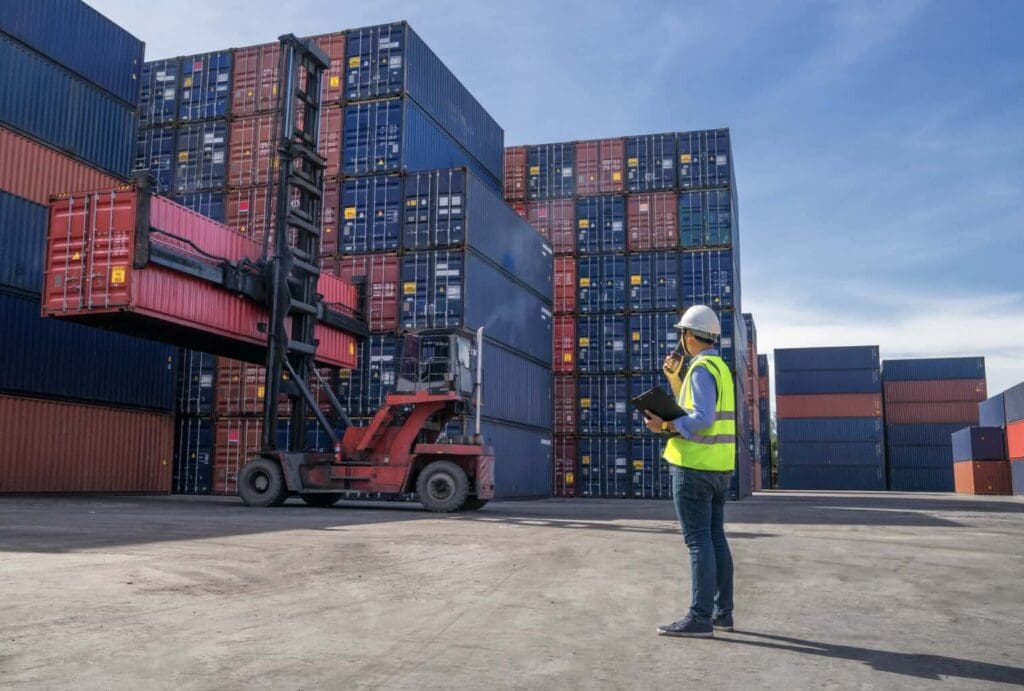
The Role of Technology in Shaping Global Trade
As we delve deeper into the 21st century, technology’s relentless march is reshaping the landscape of international trade in once-unfathomable ways. This revolution is altering how goods and services cross borders and fundamentally redefining the parameters within which global commerce operates.
At the heart of this transformation is the digitalization of trade processes. Gone are the days when trading across continents meant a cumbersome exchange of paper documents and long waits for goods to be cleared.
Blockchain technology and smart contracts have stepped onto the stage, offering transparency, speed, and security previously deemed impossible. These innovations ensure that every transaction, no matter how minute, is recorded, verified, and seamlessly executed. Imagine containers being tracked in real-time as they traverse the globe, with customs documentation prepared and cleared digitally even before they reach their destination. This is not a distant future; it is happening now.
Digital platforms are another game-changer, democratizing international trade like never before. Thanks to e-commerce giants like Alibaba and Amazon, small and medium-sized enterprises (SMEs), which once found the global stage too daunting, are now actively participating.
These platforms break down geographical and logistical barriers, allowing SMEs to market their products worldwide with a few clicks. As a result, the diversity of consumer products has exploded, and niche markets have flourished, showcasing the vibrant tapestry of global cultures and innovation.
In addition, the rise of digital services is blurring the lines between goods and services in trade. Software, entertainment, and professional services are delivered instantaneously across borders, challenging traditional trade classifications and regulations. This shift expands the tradable scope and emphasizes the importance of intellectual property rights and cross-border data flows in the new trade ecosystem.
Furthermore, technology is forcing a reevaluation of labor and production processes in trade. Automation and AI are transforming manufacturing practices, leading to “smart factories” where robots work alongside humans to produce goods more efficiently and sustainably. This evolution is prompting countries to rethink their competitive advantages and invest in skilling, reskilling, and upskilling their workforce to stay ahead.
However, this technological revolution is not without its challenges. Cybersecurity concerns, digital divides between nations, and displacing traditional jobs create a complex web of issues that must be navigated carefully. International cooperation and adaptive policies are crucial to ensuring that the benefits of technology-driven trade are inclusive and equitable.
In conclusion, we are witnessing an era where technology is not merely an enabler of international trade but a powerful force redefining its boundaries. From blockchain to e-commerce and beyond, technology is creating a global marketplace that is more connected, transparent, and inclusive.
As we stand at this crossroads, our choices will determine the future of international commerce in a digital world. The journey ahead is filled with promise and challenges, but one thing is clear: the intersection of technology and trade is where the next chapter of globalization will be written.
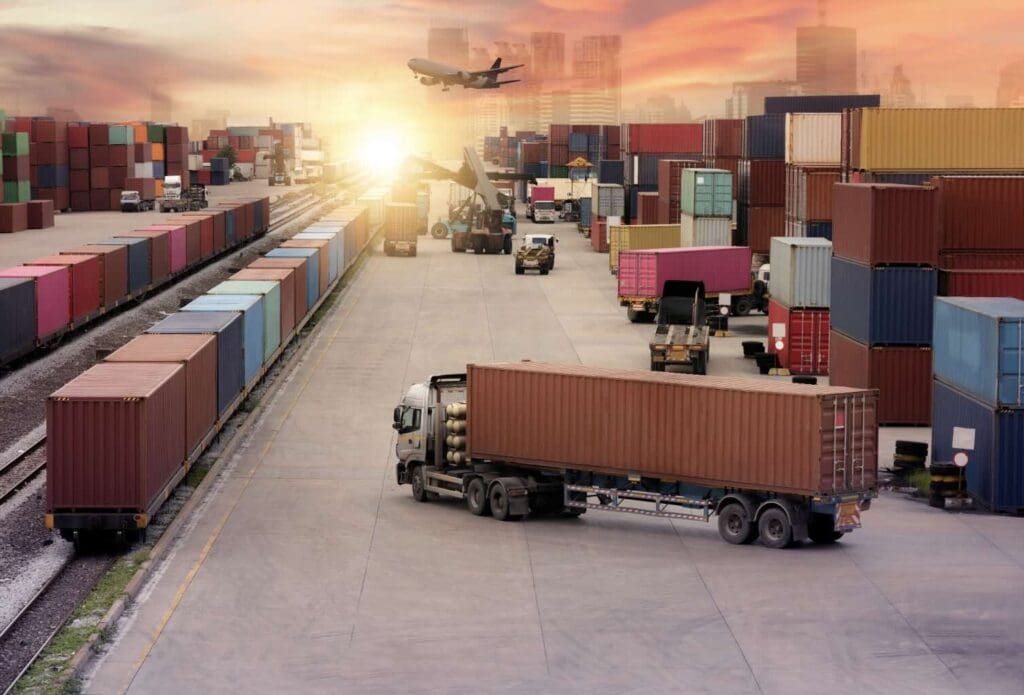
As we wrap up this exploration into the import and export sectors, it’s evident that these activities are more than just transactions; they are the lifelines of global economies, fostering innovation and bridging cultures.
With the right strategies and a focus on technological integration, nations, and businesses can harness international trade’s immense potential. It is a testament to human ingenuity and cooperation, driving us towards a more interconnected and prosperous world.
Listen To Our Podcast About
What Are the Key Differences Between Import and Export Dynamics? Below or By clicking here.
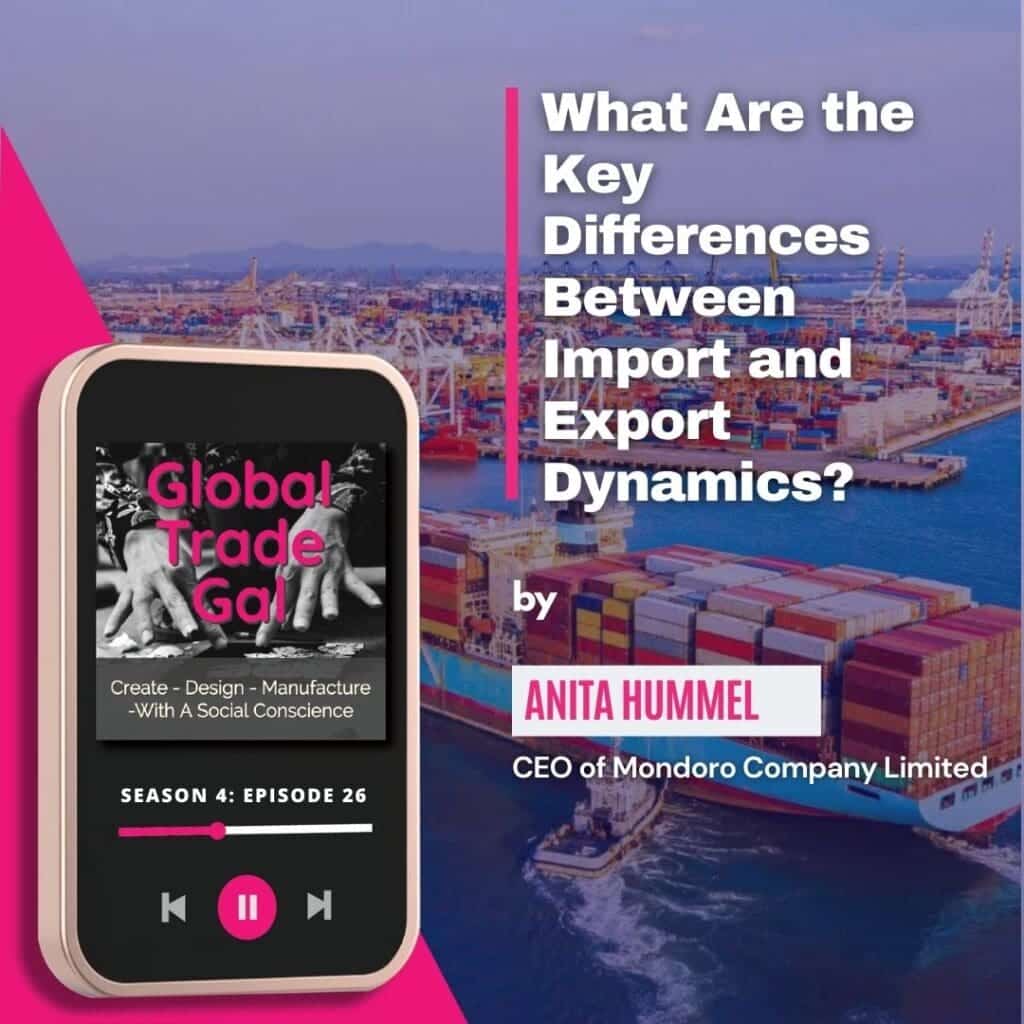
Find out more about how Mondoro can help you create, develop, and manufacture excellent home decor and furniture products – don’t hesitate to contact me, Anita. Check out my email by clicking here or become a part of our community and join our newsletter by clicking here.
Mondoro gives out a FREE Lookbook to anyone interested. You can receive a copy of our latest Lookbook by clicking here.
Listen to our Podcast called Global Trade Gal. You can find it on all major podcast platforms. Try out listening to one of our podcasts by clicking here.
Subscribe to our Mondoro Company Limited YouTube Channel with great videos and information by clicking here.
Related Content
90s Color Palettes And Designs Explored: A Return To Nostalgia
As we moved away from the excesses of the 80s, the 90s ushered in a mixed bag of aesthetics ranging from the minimal to the extravagant to the glamorous. Today, the iconic elements of 90s design are making a triumphant comeback, not just as a nod to nostalgia but also as a fresh reinterpretation for a new generation.
You can discover more by reading 90s Color Palettes And Designs Explored: A Return To Nostalgia by clicking here.
What Is The Mother Of Pearl Shell Used In Home Decor Products?
Mother of pearl, which is also known by the scientific name of nacre, is a pearl layer on the inner layer of the oyster shell. This pearl layer of the oyster is taken off the outer oyster shell. Then, the leftover inner pearl shell is cut into various small shapes and sizes to be then glued onto multiple home decor products such as mirrors, boxes, trays, and lamp bases.
You can learn more by reading What Is The Mother Of Pearl Shell Used In Home Decor Products? by clicking here.
Why Do People Like To Have Nice Furniture?
People want to have nice things in their homes, including furniture, as it will improve their surroundings and boost their mental health and mood. Nice furniture will help show others that you have good taste and care about your home. It can feel good to have nice furniture in your home.
You can learn more by reading our blog Why Do People Like To Have Nice Furniture? by clicking here.

